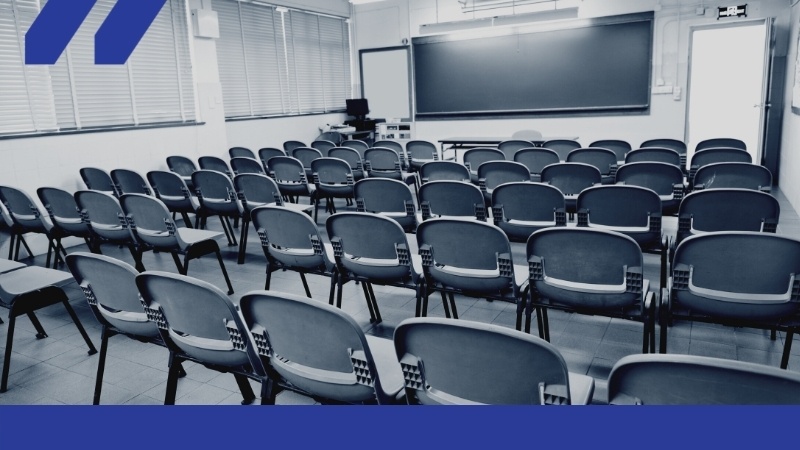
Education in Michigan in the midst of a pandemic is an ever-present discussion topic. Vaccines, PPE, mental health, testing, schedules, lost experiences and more have dominated headlines, social media and dinner table conversations.
But education in Michigan is facing another crisis: the dramatic decline of college enrollment.
Even before COVID-19, we saw year-after-year declines in college enrollment beginning in 2014. Students already facing the greatest disparities are those being affected the most.
A Stronger Nation report by Lumina Foundation showed six years after high school graduation, significantly fewer Black, Hispanic and Native American students earned a postsecondary certificate or degree compared to white and Asian students. Michigan is home to two of America's cities with the largest Black populations, yet a recent report by the Michigan League for Public Policy found Michigan ranks third-worst in its share of Black undergraduates enrolled at public four-year institutions relative to its share of Black residents.
It’s not a new problem, and it’s getting significantly worse.
The National Student Clearinghouse Research Center found in fall 2020 there was a -9.2% change in Michigan students’ college enrollment compared to the previous year, including public and private two- and four-year institutions.
Perhaps the most concerning aspect is how different the trends are from the last economic downturn a little more than a decade ago. During that recession, we saw college enrollment grow by 3 million students nationally between 2006 and 2011. The jobs least affected by layoffs — those requiring a bachelor’s degree or more — were also the first and fastest to rebound.
Today, there are some parallels. Unemployment rates are lowest among those with a bachelor’s degree or more and inflated among those with a high school diploma or less. But a sobering difference between now and then is college enrollment. We have fewer high school students as a whole, many of them are not going directly to college, and many in the workforce are not returning for additional postsecondary education, or didn’t pursue any to begin with.
Education is a critical part of our economic recovery. To be blunt, our economy will not recover if we do not have an educated workforce. Of Michigan’s Hot 50 jobs — those jobs projected to have high growth and high wages — 80% require education beyond high school. And that was before the pandemic. Every economic indicator points to a nearly universal requirement of certificates and degrees for the new jobs created post-pandemic.
What can we do?
We must reverse the declining enrollment trend. We must ensure people pursue postsecondary education — in many forms.
We must provide support to get students to complete and submit the FAFSA. It’s not too late — despite heavy pushes for FAFSA applications to be completed by spring, they are accepted at any time.
We must encourage students to complete at least one college application and ensure they have the tools to do so. Many colleges are still accepting applications and providing flexible scheduling.
And we must continue to create and fuel the critical conversations surrounding the college enrollment crisis before it is too late.
The pandemic has created a pinch in the college pipeline at a time when Michigan needs more students to enroll. We have to get better, not just better than it is now, but better than it was before. If not, we will find ourselves in a post-pandemic world without the talent to grow businesses, the economy and our communities. And, worst of all, Michigan residents will be left without viable career paths to provide economic independence.
SOCIAL MEDIA TOOLKIT
This toolkit contains social media graphics and cut-and-paste captions that will help raise awareness around the college enrollment crisis. It includes MCAN-branded graphics as well as graphics that can be customized in Canva with your own logo.
The National Student Clearinghouse Research Center found in fall 2020 there was a -9.2% change in Michigan students’ college enrollment compared to the previous year, including public and private two- and four-year institutions.